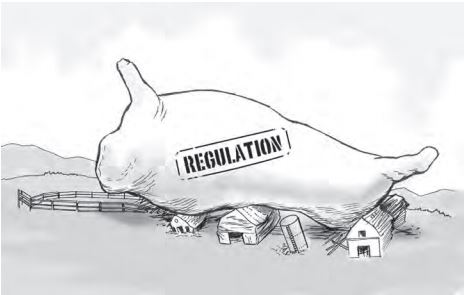Food safety made the news in 2012 when salmonella outbreaks linked to tainted cantaloupes and mangos sickened nearly 400 Americans and caused three deaths. Usually, blame for such outbreaks is placed on menacing, profit-driven corporations. Too-lax food safety laws and underfunded, understaffed government food inspection agencies let them get away with murder. However, as a member of the U.S. meat industry, I want to suggest two other culprits: the United States’ system of command-and-control food regulation and the public’s trusting embrace of it.
In fairness, the command-and-control viewpoint isn’t illogical. The American food supply is one of the safest in the world. We have access to an abundance of food (3,700 kilocalories per day) at very low prices, and food poisoning is exceedingly rare (a 0.0035 percent incidence rate, according to Centers for Disease Control data). A strict regulatory environment, it would seem, is the recipe for creating food we can trust, and a stricter one could only be an improvement.
But I submit that the current system fails to tap creative, market-based incentives to further improve food safety. As a result, we are settling for mediocrity—focusing on meeting government-established minimum safety levels. While this theory is not empirically defensible (no alternative U.S. food safety system is allowed to exist), if we consider the history of U.S. food regulation and its economic incentives, we’ll find reasons to think that we can do better.
Click here to read the rest of the article from Regulation.




